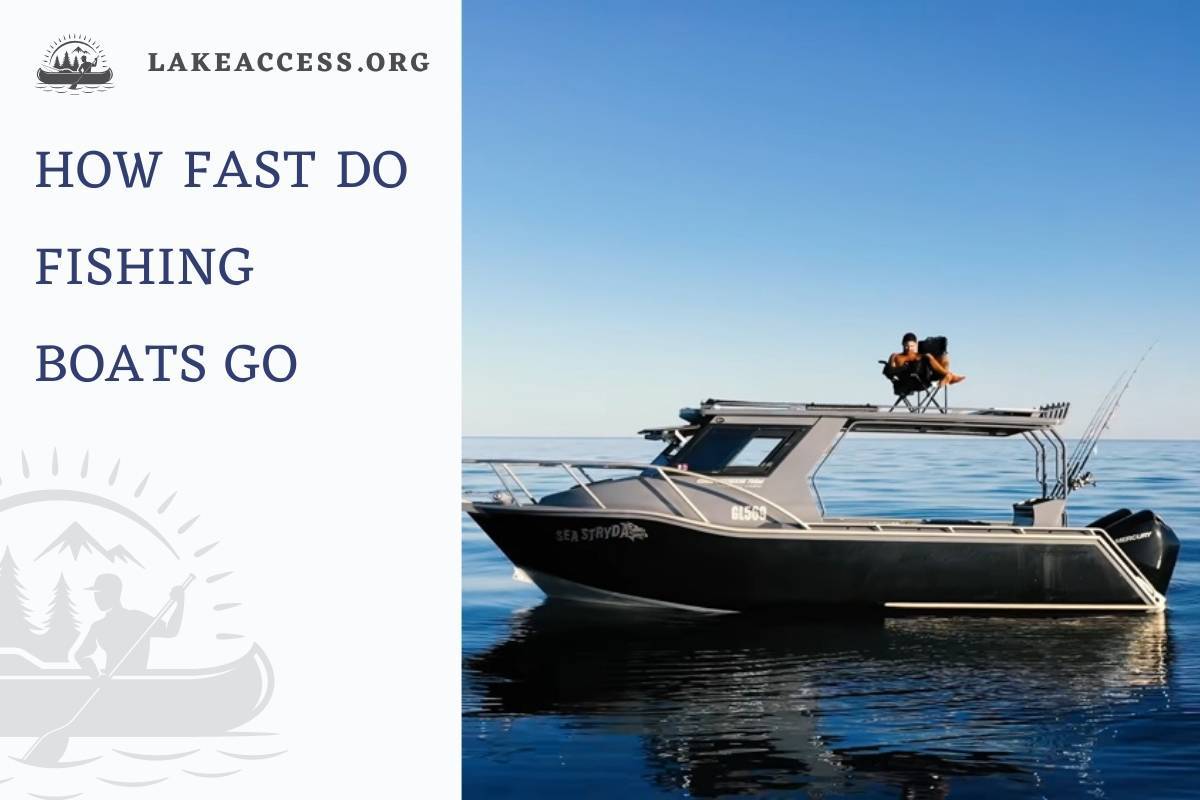Fishing boats are a popular choice for anglers and recreational fishermen who want to explore the open water and catch fish. But one question that often comes to mind is how fast fishing boats go. The speed of a fishing boat can vary depending on a number of factors, including the size and weight of the boat, the engine power, and the water conditions. In this article, we’ll explore the different types of fishing boats and their speeds, from slow to fast.
Kayak Fishing Boats
Kayak fishing boats are one of the slowest fishing boats on the market. This is because they are propelled by human power, which is limited in speed and endurance. However, with the addition of a trolling motor or an electric motor, these boats can reach much faster speeds of up to 10 miles per hour. This is a significant increase in speed, which can make a big difference when covering more distance on the water and reaching new fishing spots.
Adding a trolling or electric motor can also make kayak fishing boats more efficient and easier to use. With a motor, anglers don’t have to rely solely on their own strength and stamina to propel the boat, which can be a significant advantage, especially on longer fishing trips. Additionally, the motor can help maintain a consistent speed, which can be helpful when trolling or moving between fishing spots.
It’s important to note that the speed of a kayak fishing boat with a motor will depend on the size and power of the motor, as well as the weight and water conditions. For example, a heavier kayak with a larger motor will likely be slower than a lighter kayak with a smaller motor. Additionally, rough water or strong currents can affect the speed of a kayak fishing boat, even with a motor.
In general, adding a motor to a kayak fishing boat can significantly enhance the fishing experience by increasing the boat’s speed and efficiency. This can help anglers cover more water and reach new fishing spots, leading to more successful fishing trips.
Here we have listed some of the most popular fishing kayaks with their speeds and more info:
| Model | Length | Width | Weight Capacity | Material | Speed Capacity |
| Hobie Mirage Outback | 12 ft 1 in | 33 in | 425 lbs | Rotomolded Polyethylene | 5 mph |
| Old Town Predator PDL | 13 ft 2 in | 36 in | 500 lbs | Polyethylene | 5 mph |
| Wilderness Systems Radar 135 | 13 ft 6 in | 34 in | 475 lbs | Rotomolded Polyethylene | 6 mph |
| Perception Pescador Pro 12.0 | 12 ft | 32.5 in | 375 lbs | Polyethylene | 4.5 mph |
| Bonafide SS127 | 12 ft 7 in | 33.5 in | 475 lbs | Rotomolded Polyethylene | 5 mph |
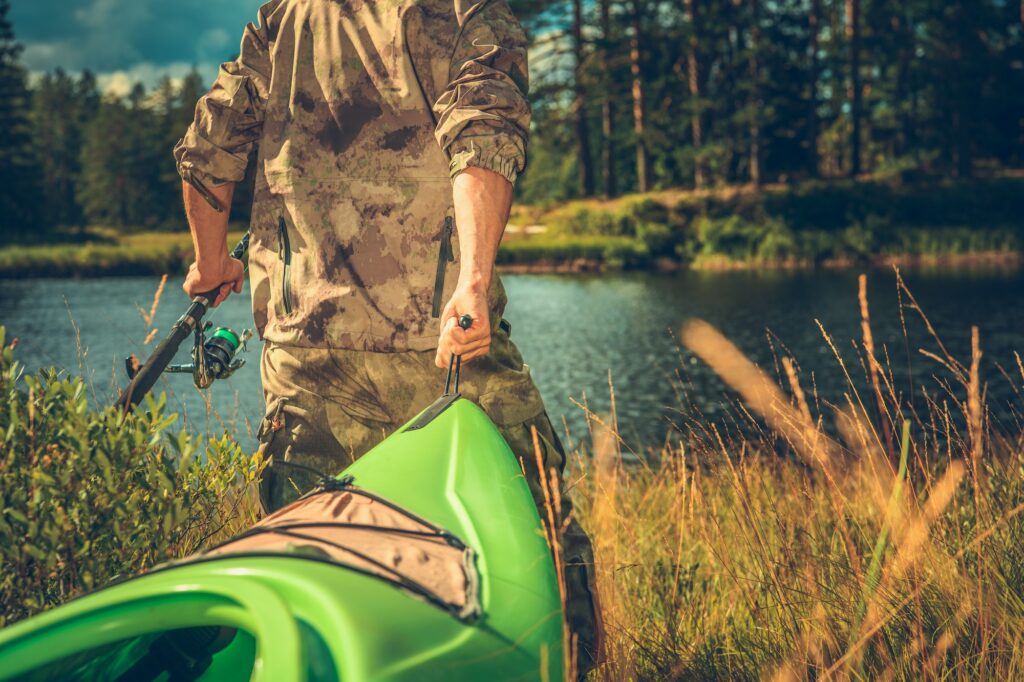
Pontoon Fishing Boats
Pontoon fishing boats are a sought-after option for fishing enthusiasts who prefer a comfortable and stable fishing experience. These boats are crafted with two or more pontoons, which offer exceptional stability and make them less likely to tip over, even when the water is choppy. One of the main advantages of pontoon boats is their spacious deck, which provides ample room for fishing gear, coolers, and even seating arrangements for larger groups.
Pontoon boats come in various sizes and engine powers, which can affect their speed. Bigger engines generally translate into faster speeds, making them perfect for those who want to quickly cruise across the water to their favorite fishing spot. The average speed of pontoon boats typically ranges between 20-30 miles per hour, depending on the boat’s size and engine power.
In addition to speed and stability, pontoon boats are popular because they offer a smoother and quieter ride than many other boats. This is especially important for those who suffer from seasickness or want to avoid loud, choppy rides.
| Brand/Model | Speed (mph) | Size (ft) | Weight Capacity (lbs) |
|---|---|---|---|
| Sun Tracker Bass Buggy | 20 | 16 | 1,500 |
| Crestliner 240 Rally | 30 | 24 | 2,550 |
| Sylvan Mirage 8522 DLZ | 25 | 23 | 2,100 |
| Bennington S20 | 25 | 21 | 2,200 |
| Lowe SS210 | 22 | 21 | 1,600 |
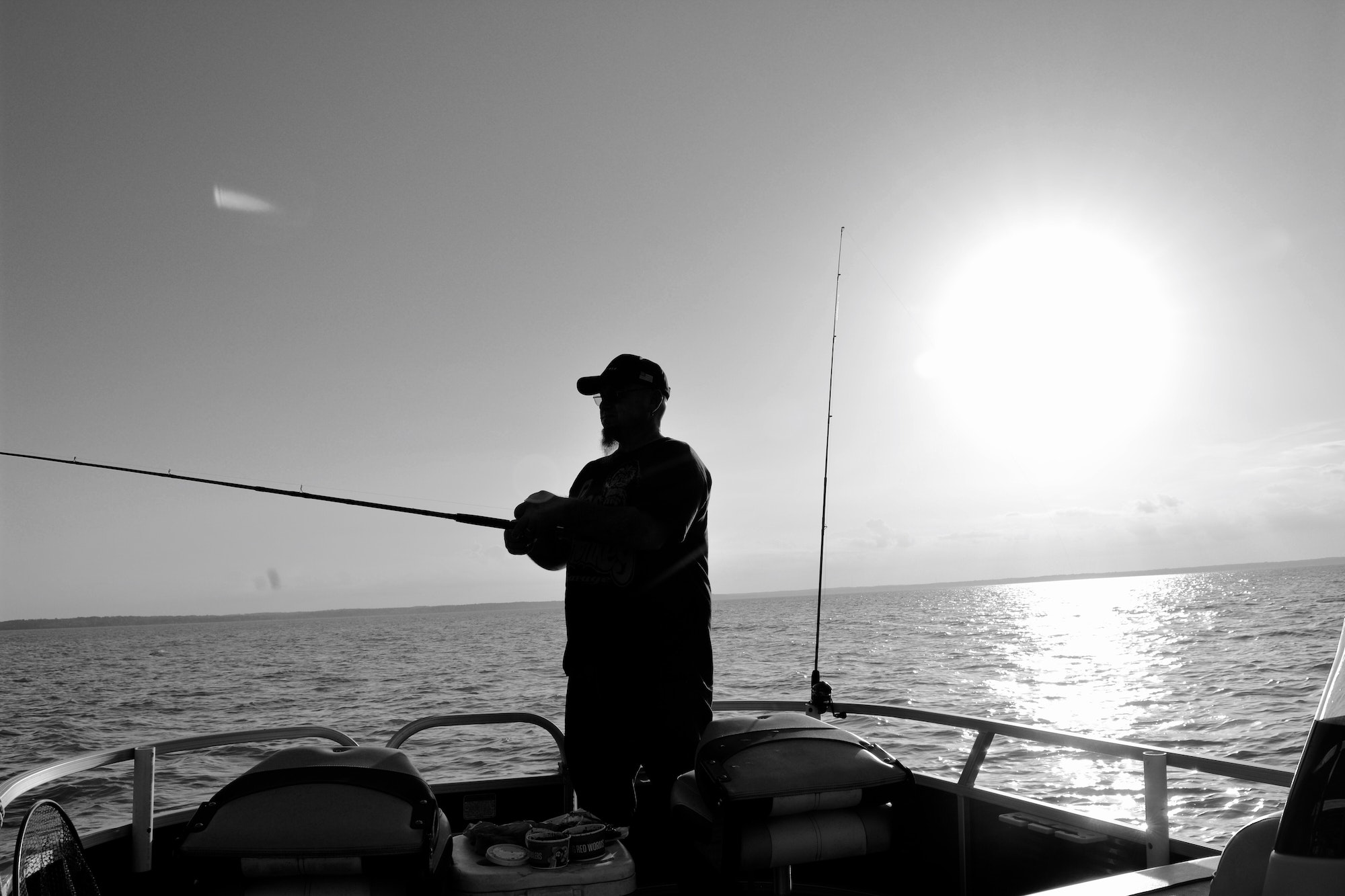
Bass Fishing Boats
Bass fishing boats are a popular choice for anglers who want to chase after bass and other freshwater fish. These boats are specially designed to provide a comfortable and efficient fishing experience. They are typically smaller in size than other types of fishing boats, but they make up for it with their agility and speed. Bass fishing boats are usually equipped with powerful engines that can reach impressive speeds of up to 70 miles per hour, making them ideal for anglers who want to move quickly and cover a lot of water in search of their next catch.
Despite their impressive top speed, the average speed of a bass fishing boat is around 40-50 miles per hour. This speed range is more than enough for most anglers, as it allows them to navigate through the water with ease while also keeping them safe and in control. Bass fishing boats are also designed to be highly maneuverable, making it easier for anglers to navigate through narrow waterways and reach their desired fishing spots. Their small size and agility make them perfect for fishing in shallow waters or areas with a lot of obstacles, where larger boats would struggle to maneuver.
| Boat Model | Speed | Size | Capacity |
|---|---|---|---|
| Triton 21 TRX | 74 mph | 21′ 7″ | 4 persons/1,700 lbs |
| Ranger Z521L | 73 mph | 21′ 7″ | 4 persons/1,475 lbs |
| Nitro Z21 | 70 mph | 21′ 2″ | 4 persons/1,600 lbs |
| Phoenix 920 ProXP | 68 mph | 20′ 6″ | 5 persons/1,600 lbs |
| Skeeter FXR20 | 67 mph | 20′ 3″ | 5 persons/1,860 lbs |
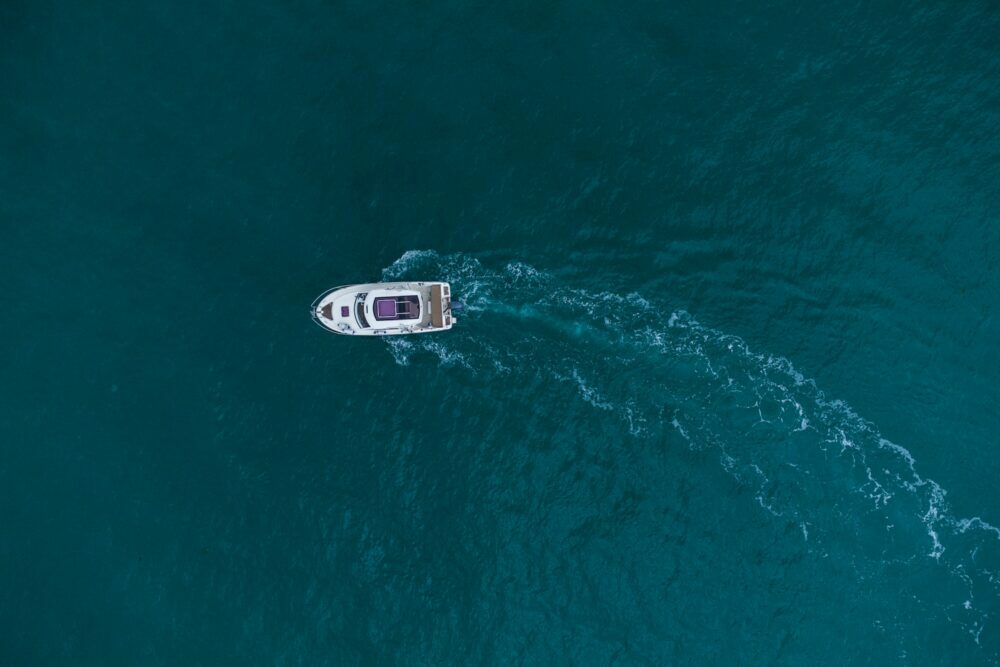
Center Console Fishing Boats
Center console fishing boats are a versatile and highly sought-after choice for offshore fishing enthusiasts. These boats are built to withstand the rough conditions of offshore waters and are designed with a console in the center of the boat that provides easy access to the steering wheel, throttle, and other controls. This unique design allows the captain to navigate rough waters and keep an eye on the fishing action simultaneously.
One of the biggest advantages of center console fishing boats is their speed. With powerful outboard engines, these boats can reach up to 70 miles per hour, making them one of the fastest fishing boats available. This speed allows anglers to quickly reach their favorite fishing spots and spend more time fishing instead of traveling.
In addition to their speed, center console fishing boats are known for their stability and durability. These boats are built with sturdy materials that can withstand the harsh offshore environment and provide a smooth, stable ride even in choppy waters. They also typically have a high weight capacity, allowing anglers to bring all the necessary fishing gear and equipment for a successful day on the water.
| Boat Model | Speed (mph) | Length (ft) | Beam (ft) | Weight Capacity (lbs) |
|---|---|---|---|---|
| Contender 39ST | 70+ | 39 | 10 | 4,300 |
| Yellowfin 42 | 70+ | 42 | 12 | 5,000 |
| Everglades 335CC | 60+ | 33 | 10 | 10,500 |
| Boston Whaler 350 Outrage | 60+ | 35 | 10 | 14,200 |
| Grady-White Canyon 456 | 50+ | 45 | 14 | 24,000 |
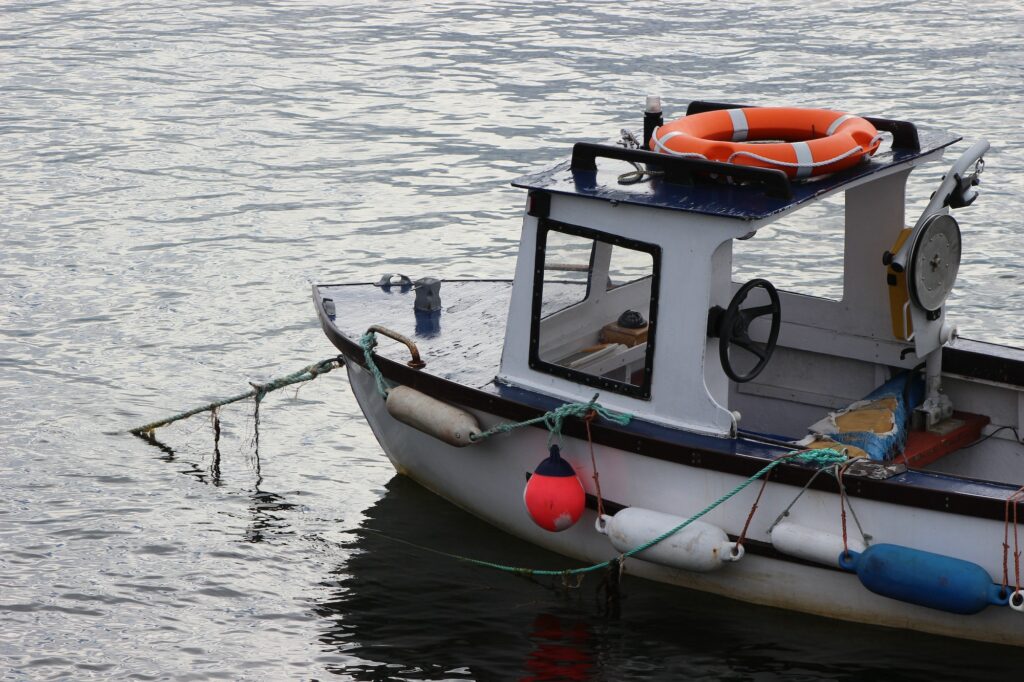
Factors Affecting Fishing Boat Speed
Fishing boats come in various shapes and sizes, and their speed can vary greatly depending on several factors. Understanding these factors can help you choose the right fishing boat that fits your needs and preferences. Here are some of the main factors that affect fishing boat speed:
Boat Size and Weight
The size and weight of the fishing boat play a significant role in its speed. Generally, larger boats with more powerful engines can achieve higher speeds than smaller boats. However, larger boats can also be heavier, which can slow them down. The boat’s weight can also affect its ability to navigate rough waters.
Type of Hull
The type of hull on a fishing boat can also impact its speed. For example, boats with a planing hull can typically reach higher speeds than those with a displacement hull. Planing hulls are designed to lift the boat out of the water at higher speeds, reducing drag and increasing speed.
Engine Power and Type
The power and type of engine on a fishing boat can greatly affect its speed. Boats with high-powered outboard motors or engines can reach higher speeds than smaller ones. The engine type can also affect speed, as two-stroke engines tend to be lighter and more powerful than four-stroke engines.
Water Conditions
The water conditions can also impact a fishing boat’s speed. Rough or choppy water can slow down a boat, while calm water can help it achieve higher speeds. Wind speed and direction can also affect the speed and stability of a fishing boat.
Weight Distribution
The weight distribution of a fishing boat can also impact its speed. An unbalanced boat can cause drag and make it harder to achieve higher speeds. Proper weight distribution can help optimize the boat’s speed and stability.
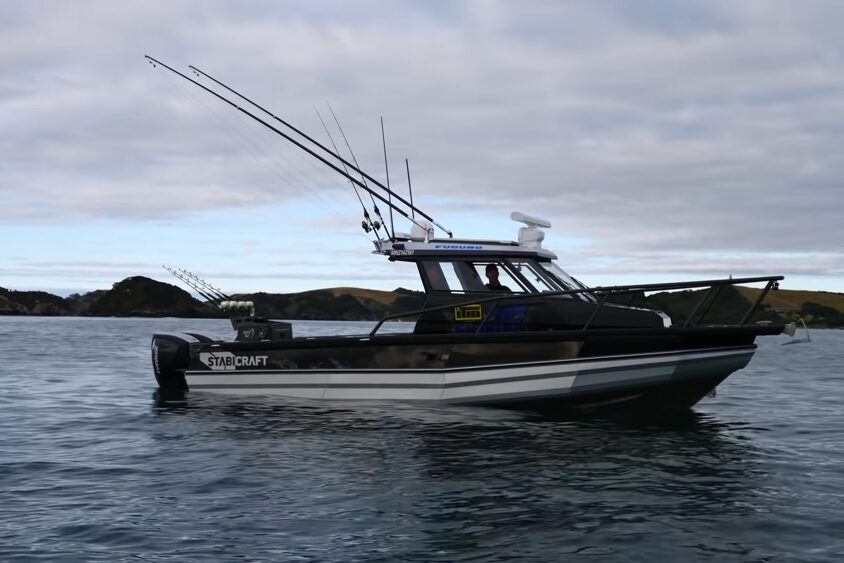
FAQ
How are fishing boats different from other types of boats?
Fishing boats are different from bass boats and most other boat types. Fishing boats are traditionally used to catch fish, and their size varies depending on the fish they’re targeting; for example, a small fishing boat might be used to catch shrimp, and a large fishing boat might be used to catch tuna. They also tend not to have motors because they are either rowed or sailed, but some modern fishing boats contain motors.
How Do You Calculate The Average Speed Of A Boat?
There are many different ways to calculate the average speed of a boat. The most accurate and well-known method uses GPS data and correlation velocity logs. This considers how fast the boat operates, adjusting for wind conditions and other variables. However, this can be expensive and time-consuming, so it is not always practical.
A more straightforward way to calculate average speed is using Crouch’s Planing Speed formula followed by practical observation. This gives us the hull speed–the speed up to which waves are generated by boats or ships, but not limited to a single pace limit. The hull speed is essential because it tells us how fast our boat can travel while remaining in contact with the water (planning). Once we have this number, we can subtract the drag coefficient (based on weight and shape) from it to determine our cruising speed.
How fast will a 50hp pontoon boat go?
A 50hp pontoon boat can go up to speeds of 25 mph. This speed is based on the experience of three different people and was found to be close to reality in 2016. If you want to upgrade your boat, I suggest doubling the power each time you increase your speed by a factor of two. The fastest pontoon boats have the horsepower in the 185-300 hp range, with speeds between 27 – 100 mph.
How fast is the fastest fishing boat?
The fastest sport fishing boats can reach speeds of up to 84 mph, with some larger and more powerful vessels capable of even greater speeds. The fastest boats on the market include the Albemarle 360 Express Fisherman, the American Custom Yachts c’est la vie, the Bayliss Hull 12 65′ Lights Out, the F&S Full Throttle Hard Top Express, the G&S Mollie, the Game Fisherman Bawana Sport Fisherman Day Boat, the Garlington Miss Behavin Sport Fish, the Hatteras GT70 Convertible Sportfish, the Henriques Dr. Bones, the Jarrett Bay Ravaganza, and the Jarrett Bay Hull 70′ 2.” All of these boats reach top speeds of over 50 mph, with the fastest reaching up to 84 mph.
Are 30 knots fast for a boat?
Thirty knots is the maximum speed for a boat. This means boats should not be taken to their limit unless they are safe and economical. Thirty knots may seem fast, but it’s important to remember that this speed isn’t appropriate for all vessels. In fact, for certain boats, 30 knots is too fast and unsafe to approach. However, 30 knots is still enough to provide the thrill of speed for many people. And in terms of averages, most boats reach around 30 knots when traveling long distances.
How fast did early sailboats go?
Early sailboats traveled as high as 25-30 knots; some modern-day boats can also go that fast.
The fastest sailboat in the world is called “Hydroptere.” The boat was built by a French company and is about 100 feet long. It is made of a unique material that can withstand high speeds and large waves. It can go over 50 knots or about 56 miles per hour.
How fast can bass boats go?
Bass boats are used for fishing and racing. They can go up to 60 miles per hour, depending on the engine size. The fastest bass boat was a 23-foot-long boat powered by a 900-horsepower engine. It went about 100 miles per hour.
Are 30 Knots Fast For A Boat?
Thirty knots are fast for most boats but can be slow if they are not built to handle such speeds. A vessel’s speed depends on whether it is built to handle such speeds, so it would depends on what you want out of your boating experience.
Thirty knots is safe and uneconomical for some boats (e.g., a trawler). It depends on what ship you are talking about: speed may be fast or average for a vessel such as a ferry or a yacht. Thirty knots is fast enough for a boat, though it’s the average speed for boats, depending on their type and make.

